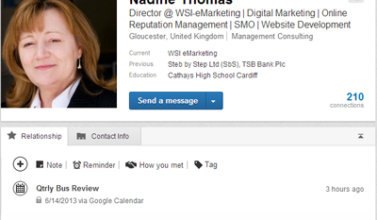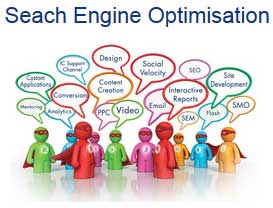
Pay Per Click (PPC) advertising is one of the most measurable forms of advertising but it only works with effective copywriting. PPC ads allow advertisers to track an advert’s activity from the moment a lead clicks the link through to conversion.
PPC ads were first small text ads with static images but a lot has changed since the early days. Today, you can include animated images, multiple products, videos and much more into your paid ad. It is, without a doubt, one of the fastest and most direct ways of driving qualified traffic to your website.
Copywriting, SEO and PPC
Search Engine Optimisation (SEO) is great for free traffic, but sometimes it can take time to rank well for keywords most relevant to your business. Even if you rank well, PPC ads can really reinforce your branding and drive even more traffic to your site.
While SEO remains essential for digital marketing success, PPC has become a driving force as it offers so many opportunities. The primary reason is that PPC is demand driven based on consumer expectations and can really help you expand and capture new markets which ultimately means new customers.
With all that in mind though, you can’t just set and forget paid ad campaigns. You need to think strategically, plan ahead and manage your campaigns properly to avoid costly mistakes. Many brands overspend their budget due to targeting the wrong audience, keywords or because of poor copywriting.
PPC Copywriting Tips
As mentioned earlier, a PPC ad campaign can be a profitable exercise or a complete waste of time and money. Not only does it come down to your product or service but much of it relates to your ad text. It is no secret that good copywriting can make all difference but it is easier said than done.
Remember, platforms like Google Ads only give you a limited amount of space to capture a user’s attention, generate interest in your offer and convince them to click. While there is no winning formula for perfect PPC copywriting, there are a few tips for creating stronger ad copy.
1. Know The Needs Of Your Target Audience
Too many businesses approach PPC copywriting by talking about themselves. This may be a natural thing to do as you know what makes your company great but you should actually do the opposite. Customers only look for you as they need something and not because they’re curious about your business. The best way to get attention is to show your target audience that you understand their concerns and can help them.
Before you write any copy, always put yourself in your ideal customer’s shoes. Think about the kind of problem they may be experiencing and identify how they would search for a solution. Only write your ad copy once you have compelling answers as a response to that imaginary situation.
Knowing your target audience allows you to tailor your ads appropriately and forms a critical part of the planning process. It will help identify whether you need multiple ads and allow you to customise your content to existing and new customers.
2. Conduct Extensive Keyword Research
Using the right keywords for your business means that your marketing team knows exactly what content to produce. This is not only essential for SEO but also in PPC advertising. The difference between a website with loads of organic traffic and one that gets none is in the keywords. The golden rule when implementing keyword research is to always think like your customer.
While long-tail keywords are incredibly powerful for content marketing, SEO and social media, don’t overuse them. When it comes to PPC campaigns, we do not recommend using long-tail keywords beyond 4 words. However, they’re incredibly powerful for content marketing, SEO and even social media.
Keep a close eye on your conversion rates and see which keywords or keyword phrases produce the best results. Consider exchanging low-conversion keyword phrases for new, more effective phrases for an even better outcome. Refer to this article for more information on keyword research.
3. Talk To Your Target Audience, Not At Them
Good copywriting for PPC ads starts with using words like “you” and “your”. Speak directly to your audience as this will make them feel more important. It also creates the impression that your business is personable and not just another brand shouting a message to the masses. Be more like a person than a business and show them that you want to create a friendly and helpful relationship from the start.
Another handy piece of advice is using emotional triggers to your advantage. Too many ads are boring which makes them easy to forget putting a brand out of the customer’s mind. One way to avoid putting your audience to sleep is carefully choosing your words and making them feel something. You should focus on the core problem or desire that brings customers to you while brainstorming ways to use the emotion associated with it.
In fact, negative feelings often result in better stimuli than positive ones as people are motivated to avoid pain. For that reason, leverage the anxiety, anger or fear of missing out related to your target audience. Other positive emotions to drive results include relief, hopefulness and being liked or admired by others.
4. Use Powerful Content And Strong Calls-To-Action
Due to the limited space on PPC ads, quality copywriting becomes even more important. Next to writing bad copy, not using all the provided space is another cardinal PPC sin. Remember, Google Ads only gives you two 30-character headlines and an 80-character description field so the content must stand out.
Keep the message short and to the point and always include a strong call to action. Use power words in your ads like “exposed,” “secret,” “guaranteed,” “shocking,” or “incredible” to capture the attention of the viewer. Always focus on the benefits of the product rather than the features. Include your relevant keyword in the ad’s headline and capitalise the first letter of each word for added impact.
This is where you need to convince your potential customer that your Ad is the one they must click so use a strong call to action. Depending on your brand, some examples include “Act Now”, “Don’t Miss Out” or “Contact Us For A Free Report”.
5. Address Objections
It may not be the same everywhere but most people need convincing before clicking on an ad or buying something. Identify a few common objections that people could raise about your product or service and address them pre-emptively within your ad copy.
The best way to counter excuses for not clicking is to bring them up before they’ve even thought of it. This way they almost immediately feel more at ease with your business and are more willing likely to complete the transaction whatever it may be.
6. Include Numbers, Figures Or Statistics
People generally respond better when reading text with numbers or statistics. They seem to have a way of attracting more attention and they’ve been shown to improve CTR (click-through rate). One simply way to use numbers is mentioning the price of your product or advertising a general sale. You can also feature numerical statistics about your business with one example being the number of customers you’ve helped succeed. Try to avoid rounding off numbers as people tend to trust exact numbers more.
7. Be Different
Try to stand out from your competition by offering something they cannot or using a more exciting approach to attract click-throughs. The limited space makes it challenging to create a more intriguing ad but it also forces you to focus on what’s really important. Clearly highlight your USP (unique selling point) in a short sentence or two in such a way that will make readers want to know more.
Remember that the goal of PPC is to get a viewer to click and find out more and not to sell the product with the ad. There is no point in having amazing ad copy that results in a click through if it sends the customer to a page unrelated to the specific offer or product stated in the ad. Customers expect to see the product or offer they clicked on, not a home page that requires them to go searching.
8. Emphasise Your Location
For the most part, people like and trust local businesses more than big, faceless corporations. If you emphasise your location in your PPC ads, it will give people a better first impression of your business. They could see you as more trustworthy and approachable, even more so when you use a local phone number. Even if you operate in multiple locations, you can still benefit. Simply create separate PPC campaigns to run in different geographical areas while using specific location-based terms for each campaign.
9. Keep On Testing
Don’t be afraid to tweak your ad copy and run A/B testing (split tests). This involves creating several ads with a few slight adjustments which include a different call-to-action, image, offer or ad copy. Regular testing is one of the best ways to make real improvements to your PPC ads but it only really works if you’ve collected sufficient data.
Some ideas for A/B testing your PPC ads include the following:
- Placing calls to action in different locations
- Comparing different calls to action
- Using different numbers, statistics or figures
- Experiment with display URLs
- Change the headline or description
- Test different offers
- Highlighting different benefits of your product or service
Why Should Your Business Do PPC?
That’s a pretty easy question to answer as it’s one of the few areas in marketing where customers present themselves to you. They essentially ask for what you have to offer by searching for it in search engines. All you need to do in your quest for digital dominance is for your offer to be competitive.
If you don’t do PPC but your competitors do, you will lose market share without a doubt. Unlike some other advertising methods, you can accurately calculate your return on investment (ROI) while being entirely trackable and transparent.
Success doesn’t happen overnight and it will take some time but we are here to help. If you need assistance with your existing PPC campaign or would like to start a new campaign, get in touch today to find out more! We also specialise in Social Media, Marketing Automation and Video Marketing among others.
Related Post
Content Sharing Via Social...
Target marketing to meet your business goals Is your business using social media channels...
- June 15, 2011
- By Nadine Thomas
- Digital Marketing
Can you get help to fund your...
If you need a new website, it’s possible that you could get help towards the cost....
- May 30, 2013
- By Rob Thomas
- Digital Marketing
10 Best Ways to take...
Others may have seen a pop-up ‘invitation to upgrade’ message when they accessed...
- June 1, 2013
- By Rob Thomas
- Digital Marketing
Google Hangouts – 6 Ways...
Google+ was launched just 2 years ago in June 2011. In the first 6 months of its...
- June 24, 2013
- By Nadine Thomas
- Digital Marketing
6 top tips on how to get the...
In Europe alone there are 243.2 million Facebook subscribers (internetworldstats, 2012)....
- July 3, 2013
- By Nadine Thomas
- Digital Marketing
What is SEO?
SEO or Search Engine Optimisation to give it its full name is the process that helps your...
- July 29, 2013
- By Nadine Thomas
- Digital Marketing











Leave a Comments